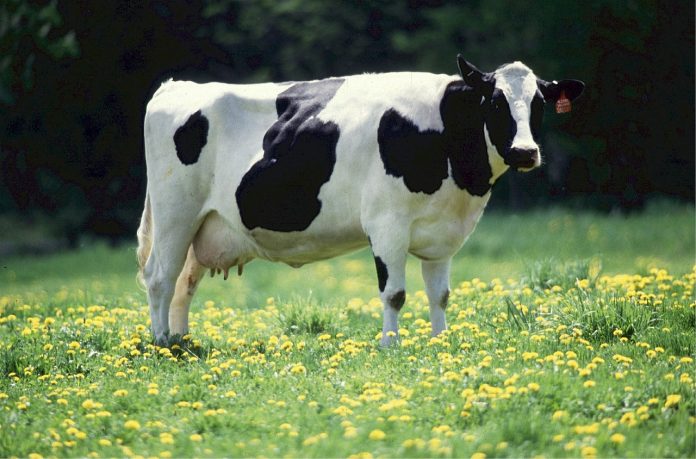Management decisions you make during the dry period affects the cow’s next lactation, and your milk check.
Your management practices should focus on providing an adequate number of days for the dry period, drying off the cow, dry cow treatment for mastitis prevention, providing adequate space and comfort, and providing nutrition matched to the dry cow period.
Rest period
Following lactation, cows need a non-lactating or dry period to prepare for milk production in the next lactation period after calving.
During the dry period, active milk-producing cells change to an inactive, resting state, a process termed involution. With the approach of calving, there is formation of new milk-producing cells and inactive cells become active again.
According to an eXtension article, Importance of Dry Cow Management in the Control of Mastitis, milk production will be 25 to 30 percent less in the subsequent lactation without a dry period.
Another important aspect of the dry period is the formation of colostrum.
How long
Data indicate that dry periods should be a minimum of 40 days in length, and should not exceed 70 days. Typically, dry periods average 60 days in length.
There is research to suggest that first lactation cows should have at least a 55-day dry period, while older multiparous cows should have a 40-day or longer dry period.
Mastitis risk
The most common recommendation for cow dry-off is abruptly ending milking rather than a gradual dry-off with reduced milking frequency.
One of the most important considerations during the dry period is reducing the risk of new mastitis infections.
University of Guelph researchers conducted a study of 300 cows in five herds and found that rapid teat closure was critical to the reduction of new mastitis infections developing during the dry period. Researchers found that the level of milk production at the time of dry-off was the most important factor influencing the speed of teat closure.
When milk production was less than 45 pounds per day, 70 percent of the cows had teat closure within a week. Cows milking at higher levels tended to have slower teat closure and almost 25 percent of the cows had teat ends that remained open for as long as six weeks after dry-off.
Thus, strategies for decreasing milk production, most readily accomplished with diet changes, should be part of a dry-off management plan for high producing cows.
Cows are vulnerable to new mastitis infections during the first few weeks of the dry period because bacteria are not getting flushed out of the teat canal via milking, teat dips are no longer applied, and in high-producing cows especially, milk leakage occurs before teat closure finally happens.
Therefore, on most farms the recommendation is to administer a long-acting antibiotic to every quarter of every cow after the final milking.
Dry cow therapy
A University of Kentucky article notes that dry cow therapy can clear up an estimated 70 to 98 percent of already existing infections and help prevent new infections.
As the emphasis on minimizing antibiotic use intensifies, some farms have looked at selective dry cow treatment. Cows suspected of a mastitis infection and those cows with a confirmed mastitis infection are the only cows that receive antibiotic treatment.
Program success depends upon careful screening using medical history and somatic cell count or milk culture testing and information to identify at risk cows. To date, research has demonstrated variable results.
One aspect of selective dry cow treatment programs that has been positive is the use of an internal, non-antibiotic, teat sealant administered to all dry cows. Research and field studies suggest that internal teat sealants offer the same mastitis preventative efficacy as the use of antibiotic dry treatment products.
Minimize stress
Strive to minimize social, environmental and metabolic stressors during the dry period. Disruption of the social hierarchy results with each pen move or regrouping of cows. Fewer moves and regroupings reduces this stress.
When regrouping cows, the addition of multiple cows to a group is a better alternative than adding an individual cow.
Cows that enter the dry period during summer months benefit from the use of shade, fans and sprinklers to reduce heat stress. Studies have shown dry cows cooled during summer months can produce 10 to 12 pounds more milk/day during lactation than cows that do not receive additional heat abatement.
Provide adequate bunk space and resting space for dry cows. Overcrowding will result in more cases of ketosis, milk fever, retained placentas and rumen upsets.
University of Kentucky recommendations are to provide 36 inches of bunk space per cow and a minimum of 1 freestall per cow or 100 to 125 square feet per cow in drylot and pack barn housing.
Rations
The dry cow requires lower protein and energy levels than the lactating cow. Do not use refusals from the lactating cow ration for dry cows. Formulate and feed dry cow diets based on dry cow nutritional requirements.
As the cow approaches calving it is important to provide a well-formulated negative Dietary Cation-Anion Difference (DCAD) ration.
Think about the dry period as the start of the next lactation, rather than the end of the current lactation. Attention to dry cow management results in healthier cows, and the potential for increased production and economic gain.













